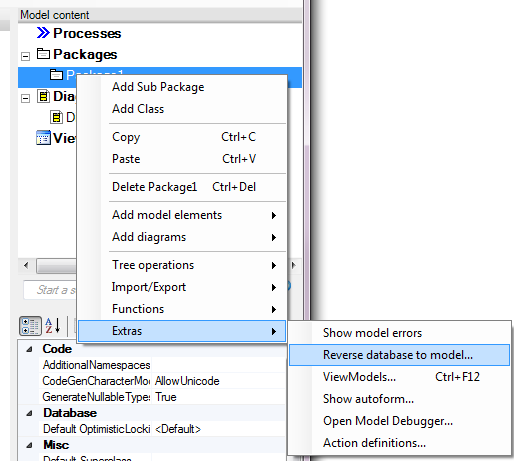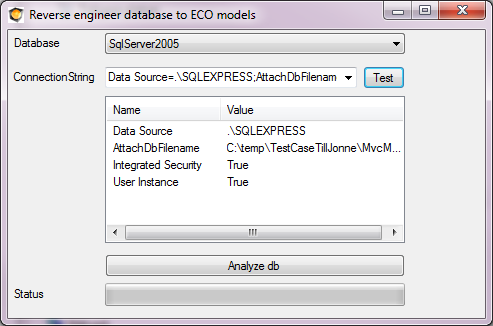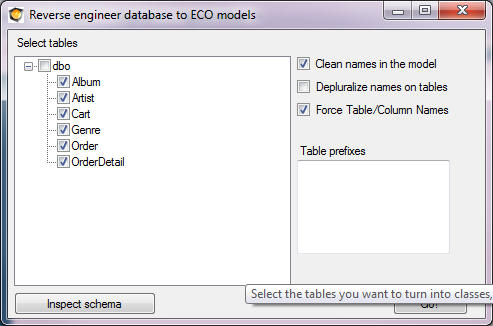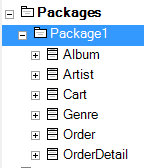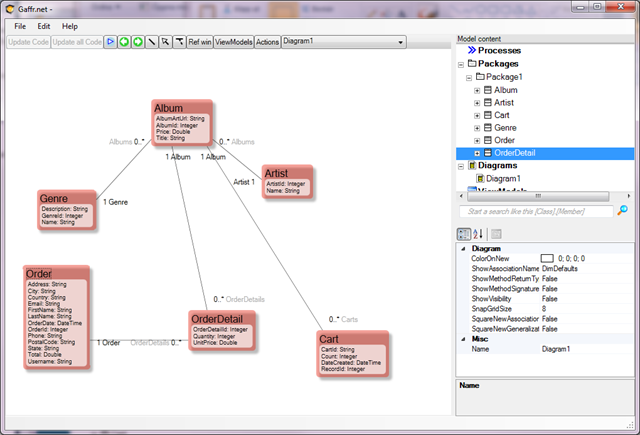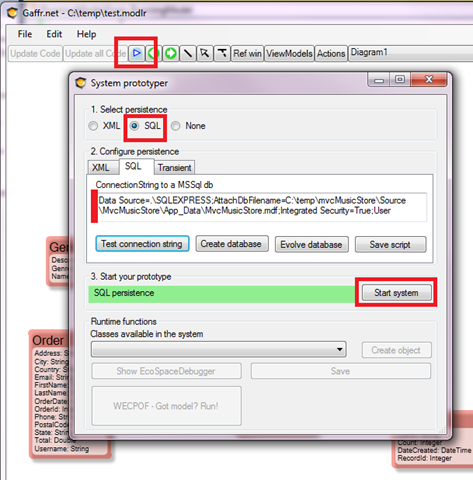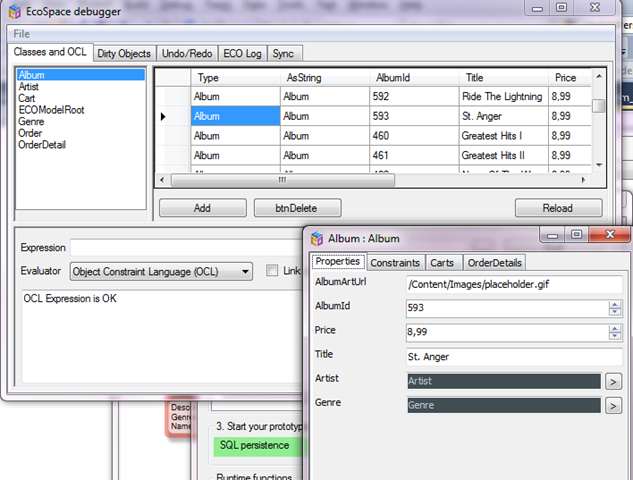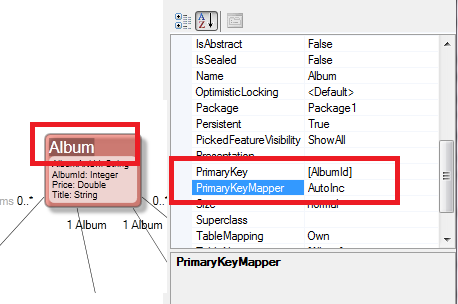No edit summary |
No edit summary |
||
| Line 1: | Line 1: | ||
Reverse engineering is what we call the process that takes a given database and turns it into a model driven “thing”. | Reverse engineering is what we call the process that takes a given database and turns it into a model driven “thing”. | ||
[[File:Reverse_eod.png|none|frame| | [[File:Reverse_eod.png|none|frame|308x308px]] | ||
You just need to give a valid connection string to it; | You just need to give a valid connection string to it; | ||
[[File:Reod.png| | in this case a use the MusicStoreDb from a MicrosoftSample: | ||
[[File:Reod.png|none|frame|405x405px]] | |||
You start by Analyzing the database: | You start by Analyzing the database: | ||
[[File:Analyzing_the_database.png|none|frame|328x328px]] | |||
[[File:Analyzing_the_database.png| | |||
And then you “Go!” – be aware of that this process will empty the package you started from and fill it with the stuff from the reverse engineer process: | And then you “Go!” – be aware of that this process will empty the package you started from and fill it with the stuff from the reverse engineer process: | ||
| Line 19: | Line 19: | ||
And I will drag these classes out on a diagram to get this: | And I will drag these classes out on a diagram to get this: | ||
[[File:Diagram_reod.png|none|frame|512x512px]] | |||
And that is enough information to run the model against the exact same database as we reversed it from: | |||
[[File:Run the model.png|none|frame|409x409px]] | |||
Giving us a way to use the trusty AutoForms and EcoSpaceDebugger to look at the changeble data : | |||
[[File:EcoSpacedebugger.png|none|frame|519x519px]] | |||
In this particular database the RecordId, ArtistId and sofort are of type int in the database and are designed with “Is Identity==true” in SqlExpress. Also the “Identity Increment” is set in SqlExpress. | |||
[[File: | The Reverse algorithm gave us a model with int Attributes for the ID – we want ECO to be able to use that Key scheme instead of the standard ECO_ID : | ||
[[File:Use that Key scheme instead of the standard ECO ID.png|none|frame]] | |||
Revision as of 09:21, 8 April 2017
Reverse engineering is what we call the process that takes a given database and turns it into a model driven “thing”.
You just need to give a valid connection string to it;
in this case a use the MusicStoreDb from a MicrosoftSample:
You start by Analyzing the database:
And then you “Go!” – be aware of that this process will empty the package you started from and fill it with the stuff from the reverse engineer process:
Giving us this in the modlr tree:
And I will drag these classes out on a diagram to get this:
And that is enough information to run the model against the exact same database as we reversed it from:
Giving us a way to use the trusty AutoForms and EcoSpaceDebugger to look at the changeble data :
In this particular database the RecordId, ArtistId and sofort are of type int in the database and are designed with “Is Identity==true” in SqlExpress. Also the “Identity Increment” is set in SqlExpress.
The Reverse algorithm gave us a model with int Attributes for the ID – we want ECO to be able to use that Key scheme instead of the standard ECO_ID :

